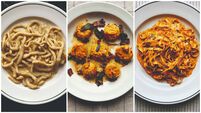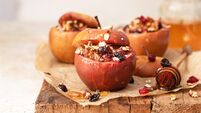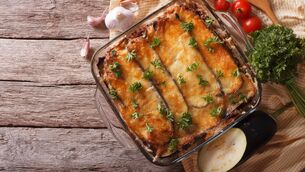Darina Allen: Get cosy this weekend with an apple cake and brown butter icing
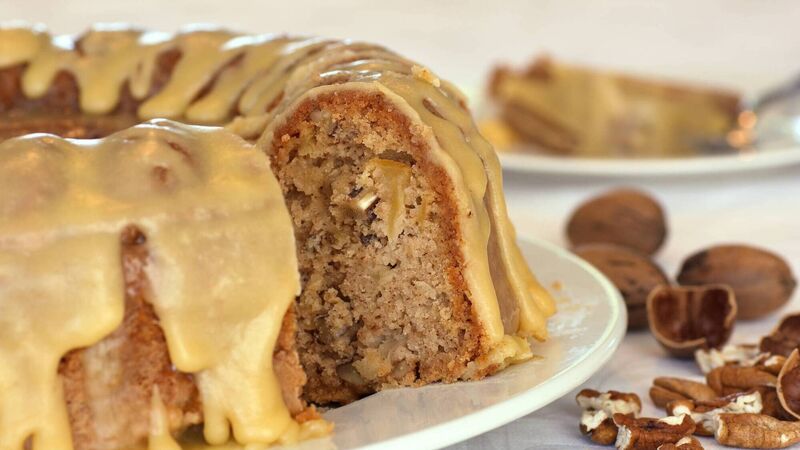
This apple cake with brown butter icing is a real find.
It all happened so suddenly in the end. I'm not sure about you but I’m still trying to come to terms with the ‘new normal’. I seem to be holding my breath, afraid that if I wake up, I’ll find that we are still in the midst of the pandemic and ‘opening up’ is just a dream.
In fact, those two years have almost become a blur, I seem to have blocked out the rollercoaster of experiences we endured to keep our business going and our team employed. I’m having to make a list of all the extra things we did here at the Ballymaloe Cookery School pre-Covid – afternoon demonstrations were open to the public, school tours to visit artisan producers, guests for lunch, garden and kitchen interns, gap year students, Slow Food events, garden tours, children’s farm walks, guest chefs, pop-pp dinners, the Ballymaloe Lit Fest, oh and I almost forgot the long table dinner in the glasshouses.
I long to get all of those things underway again but to my astonishment, I find that I am not quite brave enough to launch into each one immediately. I need to ease back in gradually and I’m still wary enough of big crowds.
However, we’re gradually getting things underway. A dear friend of Ballymaloe for over 40 years, Mary Jo McMillin hopped onto a plane in Chicago and made her way to Cork via Dublin. Mary Jo has been coming to Ballymaloe, first to Ballymaloe House and then the Ballymaloe Cookery School for over 40 years. For many decades, her idea of a holiday from her busy restaurant kitchen was to come to Ballymaloe kitchen to work during her precious break to learn and share.
Now in her 80’s, she’s like a 40-year-old, super fit, she exercises and stands on her head for 20 breaths every day! She cooks from scratch and eats fresh, delicious food daily knowing how important it is for her wellbeing. She’s a joy to have as a house guest, for many reasons not least that she trawls through the fridges, wanders through the gardens and glasshouse, picking salad leaves and edible greens and then cooks endless, delicious meals for all of us. The students love her and she loves passing on her skills and tips to them during the few short weeks that she’s with us.
On every trip, she teaches a special cooking class to the students – here are some of the recipes she shared this time.
Moroccan lamb shanks
A robust, inexpensive, deliciously spiced lamb stew that reheats brilliantly – you may want to double the recipe and freeze some for another easy meal.
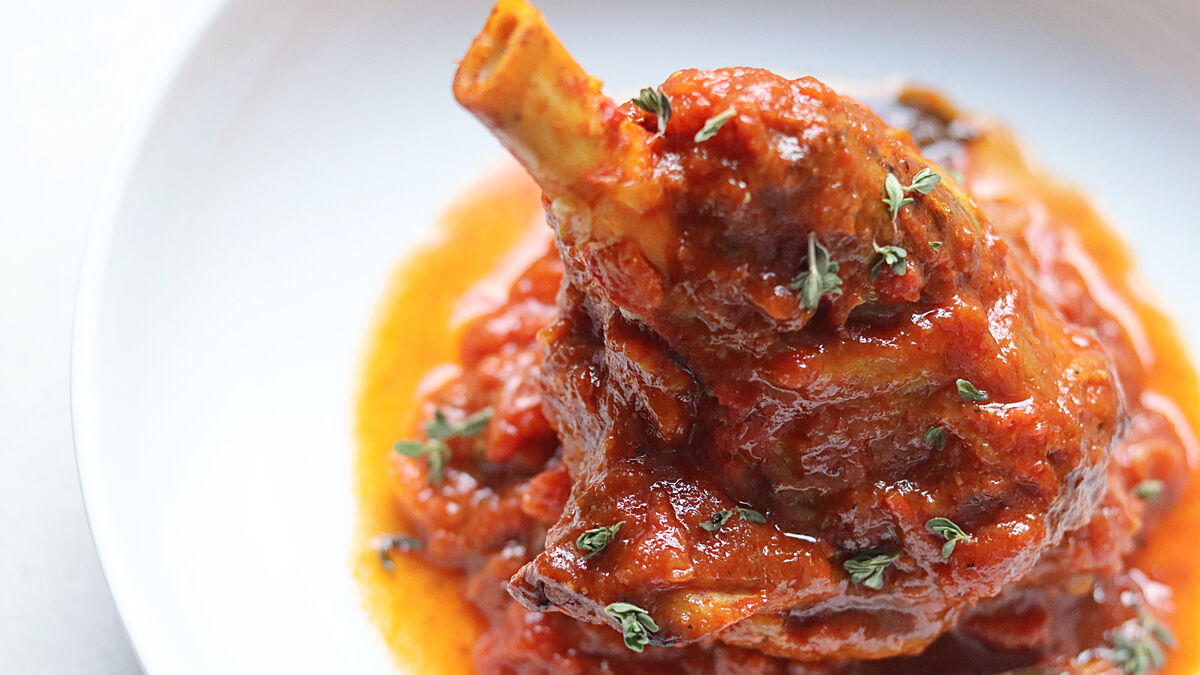
Servings
4Preparation Time
10 minsCooking Time
3 hours 0 minsTotal Time
3 hours 10 minsCourse
MainCuisine
MoroccanIngredients
4 lamb shanks
2 tbsp olive oil
1 large onion, peeled and diced
5 garlic cloves, peeled and minced
1 heaped tbsp grated fresh ginger (use a pestle and mortar)
1 tsp ground cumin
1 tbsp ground coriander
½ tsp crushed red pepper (or Aleppo pepper)
1 medium cinnamon stick
½ to 1 preserved lemon, rinsed and diced
4 – 6 prunes
1 x 400g (14oz) tinned tomatoes, crushed or chopped
salt to taste
lemon or lime (optional)
Method
Preheat the oven to 170˚C/325˚F/Gas Mark 3.
Brown the lamb shanks in the little olive oil in a frying pan over a medium-high heat. Remove to a heavy, casserole dish - pour off the excess fat. Add the sliced onion to the lamb fat and sauté gently until soft and golden. Add the garlic, ginger and sauté until fragrant. Add the cumin, coriander and crushed red pepper and sauté for a few seconds more. Add the cinnamon stick, preserved lemon and prunes to the casserole dish with the lamb. Add the tomatoes to the onion mixture.
Bring to a simmer and pour over the lamb. Deglaze the frying pan with 2-4 tablespoons of water and pour over the stew. Add salt to taste. Cover with parchment paper and the lid of the casserole dish and cook slowly in the preheated oven for 1-3 hours or until tender. Thin the sauce, if necessary, with water or stock. Taste for seasoning and tweak if necessary. Add a squeeze of lemon or lime juice if desired.
Serve with steamed rice or potatoes.
Mary Jo’s Date and Coffee Loaf
We are loving this date and coffee loaf, which keeps in an airtight tin for up to 1 week.

Servings
12Preparation Time
5 minsCooking Time
60 minsTotal Time
1 hours 5 minsCourse
BakingCuisine
AmericanIngredients
250g (9oz) stoned dates
225g (8oz) strong coffee
1 level tsp bread soda
25g (1oz) soft butter
60g (scant 2 ½ oz) caster sugar
1 tsp vanilla extract
1 egg
150g (5oz) plain flour
1 level tsp salt
110g (4oz) pecans or walnuts
Method
Prepare a 1 x 20.5 x 10cm (8 x 4 inch) loaf tin, lined with parchment paper.
Preheat the oven to 180˚C/350˚F/Gas Mark 4.
Dice the stoned dates. Cover with hot coffee, cover and allow to soak until soft. Sprinkle with bread soda.
Cream the soft butter and sugar in a bowl; beat in the egg and vanilla extract. Mix in the sifted flour, salt, nuts and date mixture. Place in the prepared tin and bake in the preheated oven for 1 hour. Cool in the tin, slice when fully cold – better on the second day and is delicious eaten with butter.
Apple cake with brown butter icing
The brown butter icing is a real find.
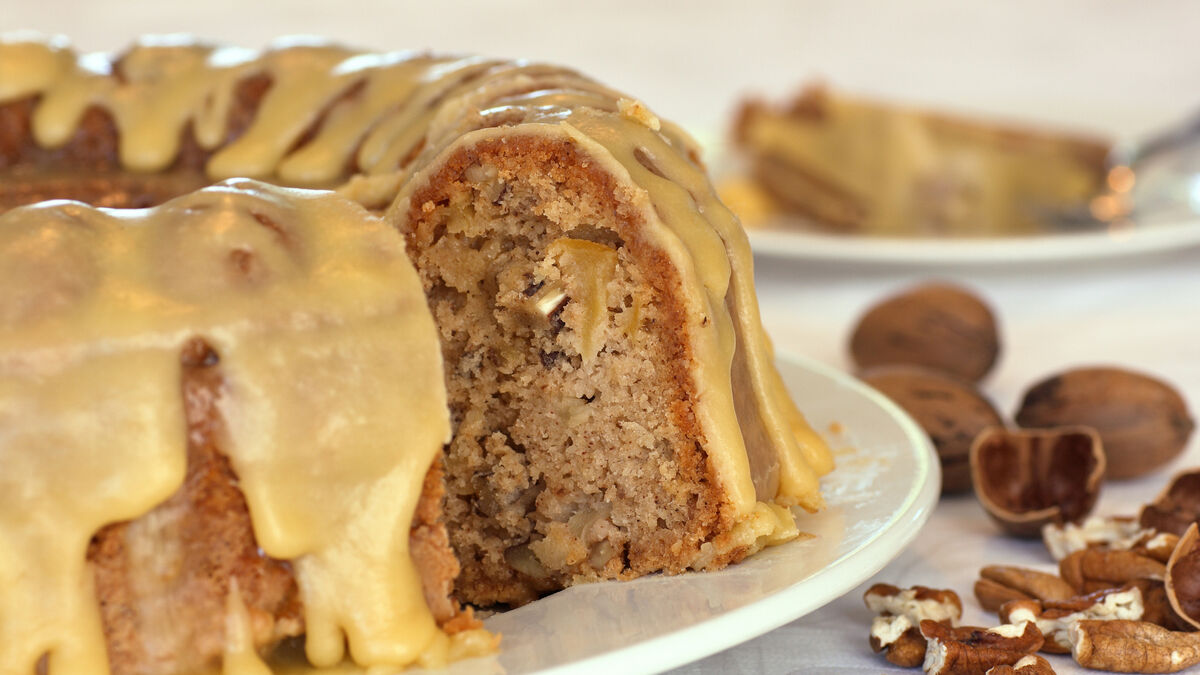
Servings
8Preparation Time
10 minsCooking Time
40 minsTotal Time
50 minsCourse
BakingCuisine
AmericanIngredients
400g (14oz) cooking apples, peeled and grated
75g (3oz) butter (6 tbsp)
250g (9oz) caster sugar
2 large eggs
225g (8oz) plain flour
½ tsp salt
1 level tsp baking soda
2 rounded tsp cinnamon
grating fresh nutmeg
50g (2oz) lightly toasted walnuts, optional
For the icing:
75g (3oz) butter
175g (6oz) icing sugar, sieved
3-4 tbsp milk
½ tsp vanilla extract
Equipment
2 x 20.5cm (8 inch) round cake tins OR 1 x 20.5cm (8inch) wide x 5cm (2 inch) deep genoise tin
Method
First, prepare the baking tins. Line the tins with parchment paper. Brush with melted butter or sunflower oil. Sprinkle with flour and tip out excess flour.
Preheat the oven to 180˚C/350°F/Gas Mark 4.
Peel the apples, grate on the large holes of a box grater.
Mix the flour, salt, sieved bread soda, cinnamon and nutmeg together.
In a large mixing bowl, cream butter and sugar. Whisk in eggs one at a time and whip to a soft, billowy mixture. If using a food mixer, remove the bowl from the stand. Using a flexible spatula, fold the grated apples and walnuts alternately with the flour into the creamed mixture.
Divide the cake mixture evenly between the prepared tins.
Bake in the preheated oven for 25-40 minutes, depending on the size, or until they are nicely browned – a skewer inserted into the cakes should come out clean when cooked.
Cool for 5 minutes in the tins before turning onto a cooling rack.
Meanwhile, make the Brown Butter Icing. Melt the butter and simmer until it turns very lightly brown and smells nutty, remove from the heat. Add in the icing sugar, stirring well to combine. Thin with milk to a spreading consistency – reheat and add drops of water to maintain emulsion if necessary. Finally add the vanilla extract and spread over the apple cake when cold.
Foraged foods from local woods, fields, hedgerows and seashore have been an integral part of the menu at Ballymaloe House for over forty years, several decades before the current trend for foraging emerged. I’m an enthusiastic forager and will take course participants for a walk on the grounds of the cookery school in search of wild and foraged foods. You’ll be amazed at what can be found even within walking distance. You’ll learn how to identify and use over forty seasonal wild food plants, flowers, as well as many foraged foods from the hedgerows. Free ingredients, fresher and tastier and often more nutritious than almost anything you will find in the shops. A walk in the countryside will never be the same again. Where you previously saw weeds, you’ll now see dinner!
Suitable for chefs, professional foragers or for anyone with an interest in foraging for pleasure
, see www.cookingisfun.ie or telephone 021 4646 785
Check out Nibbed, producer of bean to bar organic cocao products run by Ballymaloe Cookery School alumni, Lisa Maguire in Co. Wicklow. It takes 3-5 years for a cacao tree to start producing its sacred oblong fruit, Lisa sources their organic certified cacao beans from the Dominican Republic from fair-traded Co-op Farms. Some of their products include cacao blocks, choc bark, hot choc spoons, cocoa tea and nibbles…
, see @nibbed_cacao on Instagram or www.nibbed.ie

